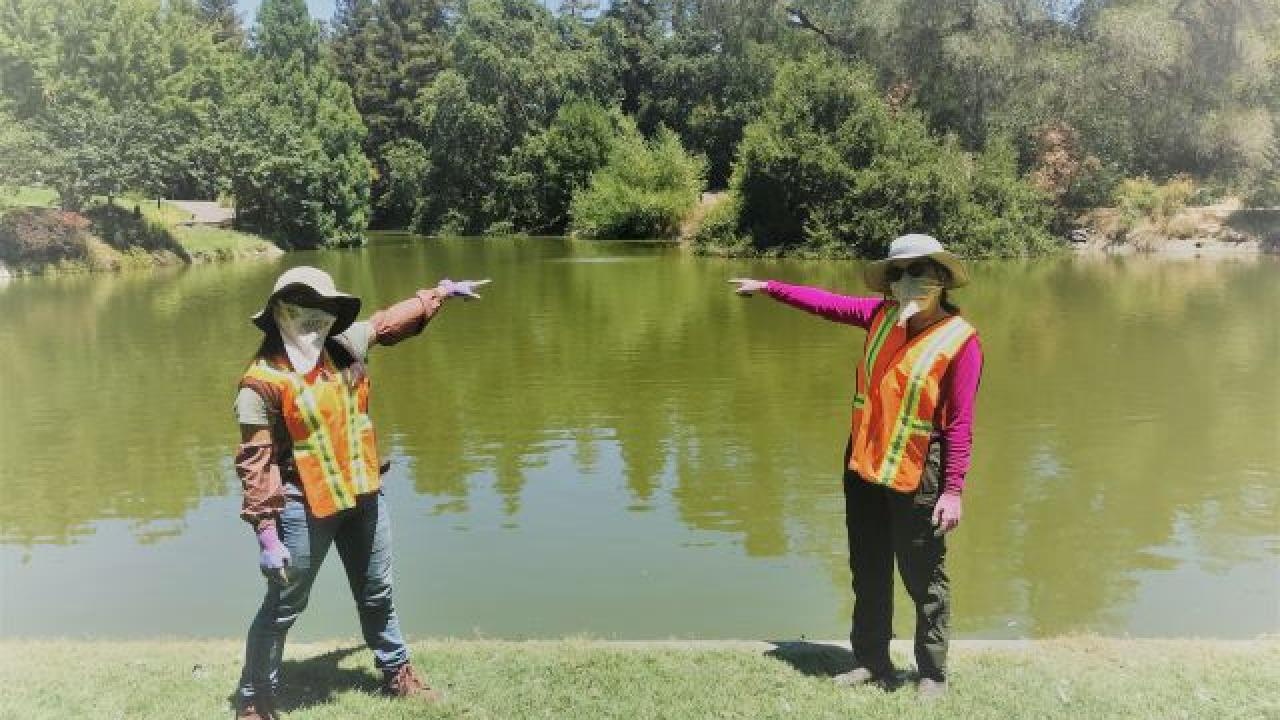
Bubbles in the Waterway
The Arboretum and Public Garden is adding two air-powered circulators to the Arboretum Waterway, one at Lake Spafford and one near the old boathouse. The reason for the circulators is to improve circulation and oxygenation of the water, which will help keep surface algae at bay and improve water quality. We also expect that, like last year, we will find cyanobacteria in the water at some point this summer or fall. We are monitoring for this following the guidance of the California State Water Quality Control Board. We hope that circulators will also help decrease this natural phenomenon.
Cyanobacteria
Cyanobacteria (also known as blue-green algae) are photosynthetic bacteria found naturally in fresh water systems, which include species that, under certain conditions, can produce toxins. Systems overenriched by nutrients, with elevated temperature, sufficient light intensity, and decreased water flow, provide conditions which can foster toxic blooms. Cyanobacteria blooms are not a recent phenomenon, but their frequency and geographic distribution seem to have dramatically increased in the United States and around the world.
Circulation has been found to reduce cyanobacteria blooms in similar water bodies. These air-powered circulators operate by pumping air through a diffuser near the bottom of the waterbody, resulting in the formation of plumes that rise to the surface and create vertical circulation cells as they propagate outwards from the aerator. This mixing of the water column disrupts the behavior of cyanobacteria to migrate vertically in addition to limiting the accessibility of nutrients. It may also promote favorable growth conditions for competing organisms.
The air-powered circulators are not adding water or anything other than air to the Arboretum Waterway. They are safe for fish and other aquatic organisms.
You may be wondering about plans for the next portion of the Arboretum Waterway Maintenance and Improvement Project. Phase 1 of the project was completed in 2018 and can be seen from the east end of the Waterway (near downtown Davis) to the Redwood Grove. This area remains free of the typical smelly algae mats we used to see over the summer thanks to water circulation over the weirs and California native plants along the water edge. The UC Davis Arboretum and Public Garden has applied for a state grant that could provide funding for Phases 2 through 4 with matching funds from UC Davis. If funded, we hope to resume construction of the remaining phases of the project in 2022.
